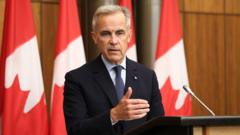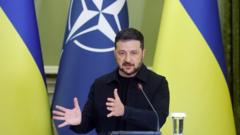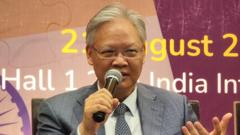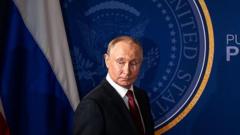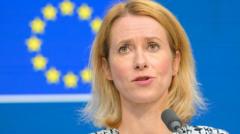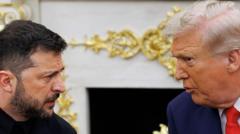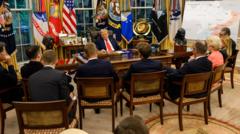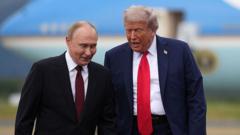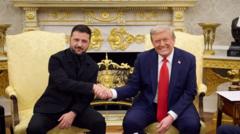Zelensky's latest visit to Washington highlights his shift in strategy, emphasizing diplomacy and personal connection while seeking essential security guarantees amid ongoing hostilities.
**Zelensky's Diplomatic Dance: Key Developments from US Talks**

**Zelensky's Diplomatic Dance: Key Developments from US Talks**
Ukrainian President Volodymyr Zelensky aims to strengthen ties with the US and secure critical military support during talks in Washington.
Ukrainian President Volodymyr Zelensky made a strategic return to the White House on Monday for discussions with US President Donald Trump, aiming to navigate the complexities of the ongoing war in Ukraine. This meeting comes on the heels of a recent, less productive summit between Trump and Russian President Vladimir Putin in Alaska, prompting the involvement of several European leaders who adjusted their schedules to engage in the discussions.
Zelensky kicked off the meeting with a pronounced effort to charm his American counterparts, deploying a series of six "thank yous" early in their discussions. His previous visit, marred by criticism from Vice President JD Vance regarding gratitude for US aid, served as a backdrop for his keen sensitivity to public perception. This time, he opted for a formal dark suit instead of military attire, responding to press inquiries with humor reminiscent of their prior antagonistic encounter.
Emphasizing a personal touch, Zelensky presented Trump with a letter from Ukrainian First Lady Olena Zelenska to Melania Trump, further enriching the narrative of unity amid conflict. Trump recounted Melania's recent correspondence with Putin, articulating her calls for compassion toward children affected by the war.
A pressing focus of the talks was on security guarantees for Ukraine. When asked about his country's requirements, Zelensky's urgent response highlighted a comprehensive need for military aid, calling for "everything" from troops to intelligence and training. Trump, receptive to these concerns, suggested that Europe would play a crucial defensive role, yet expressed a willingness for the US to provide robust protection.
Underlying these discussions was a palpable worry among European leaders that vague assurances might prove insufficient in deterring further Russian aggression. Behind closed doors, the call for substantive American commitment was expected to resonate strongly, as the hope dwindled for mere symbolic support.
Moreover, Trump announced ambitions for a trilateral meeting involving Zelensky and Putin, speculating that it is now a matter of "when, not if." While such a meeting could serve as a crucial pivot point in peace negotiations, the actualization of this objective remains fraught with complications, especially given previous Kremlin reticence to engage in direct talks.
As the international community continues to engage with the unfolding conflict, Zelensky’s latest diplomatic overture sets the stage for potential shifts in strategy and coalition dynamics in the pursuit of lasting peace.

